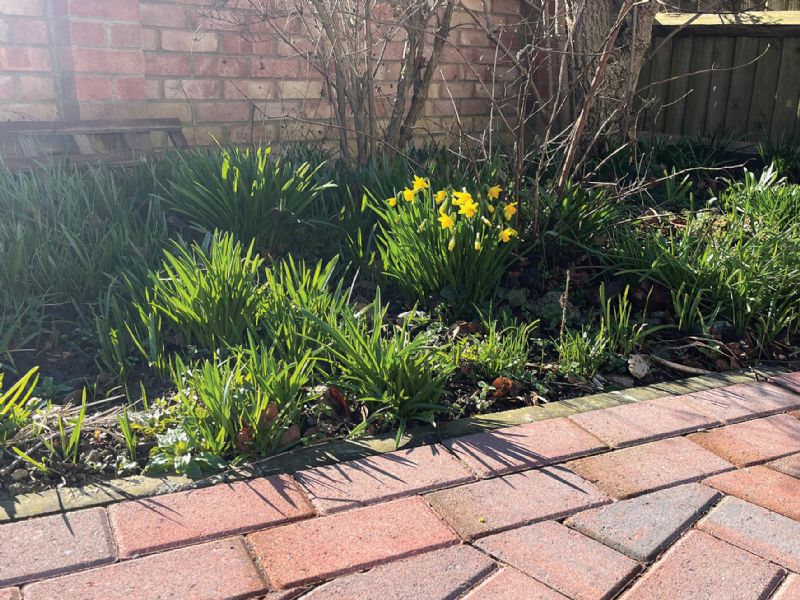- Home
- News, Articles & Reviews
We are hiring! Please click here to join our growing magazine delivery team in Gloucestershire!
Areas
Environment
Archive

Turning your driveway into a thriving ecosystem
All Areas > Environment > Save the Planet
Author: Hannah Basnett, Posted: Tuesday, 25th March 2025, 09:00
When I walk through the streets, my eco-conscious mind envisions a world where nature and urban life seamlessly intertwine. I picture a heritage apple tree on the corner of a driveway, shading a small pond filled with frogs, while children chase butterflies through wildflowers. Neighbours exchange honey for homemade bread over a thriving hedgerow, fostering both biodiversity and community spirit.
Yet, reality presents a stark contrast. Over a quarter of front gardens are completely paved over, and concrete is the second most used substance in the world after water. While concrete offers durability and convenience, its impermeability disrupts natural water cycles, contributing to flooding, heat retention, and habitat loss.
At one of my jobs, we are actively exploring ways to ‘green up’ a car park – finding ways to utilise unused spaces to reconnect green patches and create essential nature corridors. The question is: how can we transform driveways, pavements and car parks into thriving, biodiverse spaces?
The benefits of permeable paving
Traditional concrete driveways prevent water from soaking into the ground, leading to increased surface runoff and flooding risks. Permeable paving, however, allows water to filter through, gradually replenishing soil moisture and reducing flood risks. Although not suitable for heavy loads, pervious concrete and other eco-friendly materials are perfect for driveways, footpaths, and lighter-traffic areas.
Permeable pavements also trap pollutants, preventing them from contaminating water supplies. They also help to counteract the urban heat island effect by cooling surfaces rather than absorbing heat, making cities more comfortable in extreme summer temperatures.
Did You Know?
• Permeable pavements have been used in Europe since the 1800s for structural purposes.
• They became popular again post-WWII due to cement shortages.
• In urban areas with high temperatures, permeable paving can significantly reduce heat retention.
Here are some simple changes to help make your driveway a greener space:
• Convert an unused driveway corner into a wildflower patch.
• Plant a small tree in a pot or create a vertical garden.
• Replace solid fences with hedges to provide food and shelter for wildlife.
• Install water troughs at down-pipes to prevent flooding and support local wildlife.
• Swap one concrete slab for a permeable alternative like gravel, open-joint bricks, or grass pavers.
The power of small changes
Even the smallest effort – removing a single paving slab, planting one shrub, or installing a trellis – can collectively transform our streets into greener, healthier spaces. By making conscious choices in our own driveways, we can foster an environment that benefits both people and wildlife, one step at a time.Copyright © 2025 The Local Answer Limited.
Unauthorized use and/or duplication of this material without express and written permission from this site's author and/or owner is strictly prohibited. Excerpts and links may be used, provided that full and clear credit is given to The Local Answer Limited and thelocalanswer.co.uk with appropriate and specific direction to the original content.More articles you may be interested in...


© 2025 The Local Answer Limited - Registered in England and Wales - Company No. 06929408
Unit H, Churchill Industrial Estate, Churchill Road, Leckhampton, Cheltenham, GL53 7EG - VAT Registration No. 975613000You are leaving the TLA website...
You are now leaving the TLA website and are going to a website that is not operated by us. The Local Answer are not responsible for the content or availability of linked sites, and cannot accept liability if the linked site has been compromised and contains unsuitable images or other content. If you wish to proceed, please click the "Continue" button below:




